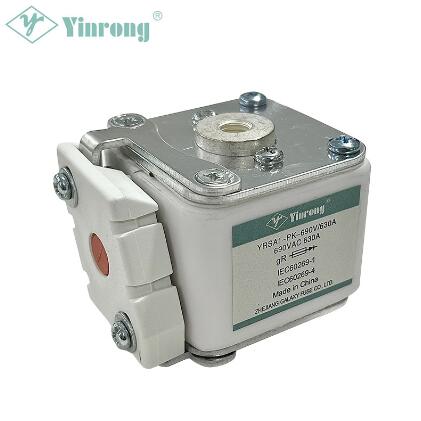Crafting Reliability: Materials Behind the 690V 630A YRSA1-PK High-Speed Fuse Construction
2024-01-06
Introduction:
In the intricate world of electrical components, the materials used in construction play a pivotal role in determining the reliability, durability, and overall performance of the product. The , known for its swift response to overcurrent events, is no exception. In this blog post, we delve into the materials that form the backbone of the YRSA1-PK's construction, showcasing the meticulous engineering behind its design.
Core Components of the YRSA1-PK:
1. Fusible Element:
- The fusible element is the heart of any fuse, and the YRSA1-PK is no different.
- Typically, a blend of high-conductivity materials with low melting points is used to form the fusible element.
- These materials allow the element to melt rapidly when subjected to overcurrent conditions, enabling quick interruption.
2. Ceramic or Fiber Tube:
- The fusible element is often housed within a ceramic or fiber tube.
- These materials provide insulation and structural support, preventing the fusible element from contacting other components.
3. Metal End Caps:
- Metal end caps are commonly used to encase the ceramic or fiber tube, forming a protective enclosure for the fusible element.
- These end caps are often made of metals with good conductivity and mechanical strength.
Key Materials in Construction:
1. Silver:
- Silver is a prevalent choice for the fusible element due to its exceptional electrical conductivity.
- The use of silver ensures efficient current flow and contributes to the rapid melting of the element during overcurrent events.
2. Copper:
- Copper is another conductive material often found in the construction of fuses, including the YRSA1-PK.
- Copper may be used in various components, such as end caps or conductive pathways within the fuse.
3. Ceramic or Fiber Reinforced Resins:
- The insulating properties of ceramics or fiber-reinforced resins are essential in preventing electrical contact between components.
- These materials offer thermal stability and mechanical strength.
4. Silver-Plated Copper Contacts:
- Contacts within the fuse, responsible for connecting the fuse to the circuit, may be made of silver-plated copper.
- Silver plating enhances conductivity and corrosion resistance.
5. Metal Alloys:
- Various metal alloys may be used in the construction of supporting structures, end caps, or terminals.
- Alloys are chosen for their mechanical properties, corrosion resistance, and compatibility with the fuse's operating environment.
Impact of Materials on Performance:
1. Conductivity:
- The use of high-conductivity materials like silver and copper ensures minimal energy loss and efficient current flow, contributing to the fuse's performance.
2. Melting Characteristics:
- The choice of materials in the fusible element determines its melting characteristics during overcurrent events.
- Rapid melting is crucial for swift interruption and protection of connected equipment.
3. Mechanical Strength:
- Structural components, such as end caps and supporting structures, rely on materials with robust mechanical strength to withstand the forces encountered during operation.
4. Thermal Stability:
- Materials with high thermal stability are essential for maintaining the integrity of the fuse during normal operation and overcurrent events.
Environmental Considerations:
1. Corrosion Resistance:
- The selection of corrosion-resistant materials ensures that the YRSA1-PK remains reliable in diverse environmental conditions, protecting it from degradation over time.
2. Environmental Compliance:
- Materials used in the YRSA1-PK's construction adhere to industry standards and environmental regulations to ensure safety and compliance.
Conclusion:
The 690V 630A YRSA1-PK High-Speed Fuse owes its reliable and high-performance characteristics to the meticulous selection of materials in its construction. From the conductivity of silver to the mechanical strength of supporting structures, each component plays a crucial role in ensuring the fuse's ability to respond swiftly to overcurrent events. As industries continue to demand precision and reliability in their electrical systems, the YRSA1-PK stands as a testament to the careful balance of materials that contribute to its exceptional performance and unwavering dependability.



